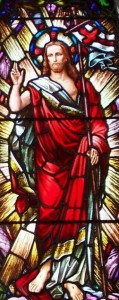 Many years ago, a group of Christian people was moved by a vision of what could and should be for themselves, their families and their community. Because of that vision, this local church was established. In the combined history of what was originally two congregations, St. Peter’s Church, Plymouth, and St. Clement’s Church, Wilkes-Barre, many people both within and outside the congregation’s membership have been richly blessed because of this church’s efforts to be faithful.
Many years ago, a group of Christian people was moved by a vision of what could and should be for themselves, their families and their community. Because of that vision, this local church was established. In the combined history of what was originally two congregations, St. Peter’s Church, Plymouth, and St. Clement’s Church, Wilkes-Barre, many people both within and outside the congregation’s membership have been richly blessed because of this church’s efforts to be faithful.
“Where two or three are gathered together” is a passage that reflects the early days which gave birth to St. Clement’s Church, Wilkes-Barre. Following a brief period where just a few area families gathered for the purpose of holding church services and Sunday School, a charter was granted in the month of April 1869, and soon the next steps toward establishing parish life were taken.
Washington Lee, a charter member, donated a lot located on Hanover Street for a church building. The cornerstone was laid on September 12, 1869. During the month of June 1871, the stone church, costing $10,000.00, was completed. Overcoming various hurdles with patience and perseverance, on July 11, 1871, free of debt, St. Clement’s Church was consecrated and the first rector was called in February of the next year.
During the years of 1872-1884, St. Clement’s experienced adversities with resignations, closings and re-openings while Sunday School continued on a regular basis. The period of struggle urged the membership to trust God, persevere, and continue efforts to become self-sustaining, a goal eventually obtained.
The earliest ministrations of St. Peter’s, Plymouth, were the occasional Sunday services begun in June 1822, with the formal organization of a congregation on May 8, 1856. St. Peter’s was adopted as a Mission Station under St. Stephen’s Church, Wilkes-Barre, in 1873 and became an Organized Mission in 1947.
The Agnes flood of June 1972 was a major catastrophe affecting the majority of the population and properties throughout Northeastern Pennsylvania. Of the two churches, St. Peter’s was particularly affected by this disaster and eventually closed and was demolished. The congregation, with prayers and with thoughtful and agonizing decisions to be made, concluded that St. Peter’s should join with St. Clement’s and form the Episcopal Church of St. Clement and St. Peter.
Many parishoners of both congregations are life-long members with a long history of family connections to their church, which may account for the determination which has helped to sustain this church through adversity and has encouraged growth.